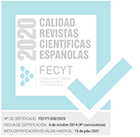The cartography of vegetation in the cryoromediterranean belt of Sierra Nevada: a tool for biodiversity conservation
Keywords:
high mountain, plant communities, boundaries, climatic change, Sierra Nevada.
Abstract
Geographic Information Systems are tools which have been used with great interest in vegetation studies. The mapping process developed to store data about vegetation and flora in the upper vegetation belt of Sierra Nevada (South-Eastern Spain) is shown. The aim was to elaborate a detailed cartography that served into future to detect changes in plant communities. The extension of the crioromediterranean belt was estimated in 3875.7 ha, ranging between 2750-3290 m of altitude. We have detected thirteen endemic plant communities and four variants inside, all of them are commonly distributed with low cover and very disperse form. The total of quantified taxa was 185, with more than 37 % of them are endemic of the Baetic range. Our study suggests that the Geographic Information systems are good tools for the study of very complex territories as high mountain areas. They generated information that could be used as a testimony to observe the current climatic change processes.Downloads
Download data is not yet available.
Article download
How to Cite
Fernández Calzado M. R. y Molero Mesa J. (2011). The cartography of vegetation in the cryoromediterranean belt of Sierra Nevada: a tool for biodiversity conservation. Lazaroa, 32, 101-115. https://doi.org/10.5209/rev_LAZA.2011.v32.37255
Issue
Section
Articles
License
Lazaroa is an open access journal to promote global exchange knowledge. It facilitates unrestricted access to its contents from the moment of publication in its electronic edition. The originals published are property of the Universidad Complutense and it is mandatory to cite such source in case of total or partial reproduction. All contents are distributed under a Creative Commons License 4.0 (CC BY 4.0). This circumstance must be expressly stated in this way when necessary. You can check the informative version and legal text of the license.
Lazaroa does not charge for download or publishing any article.








